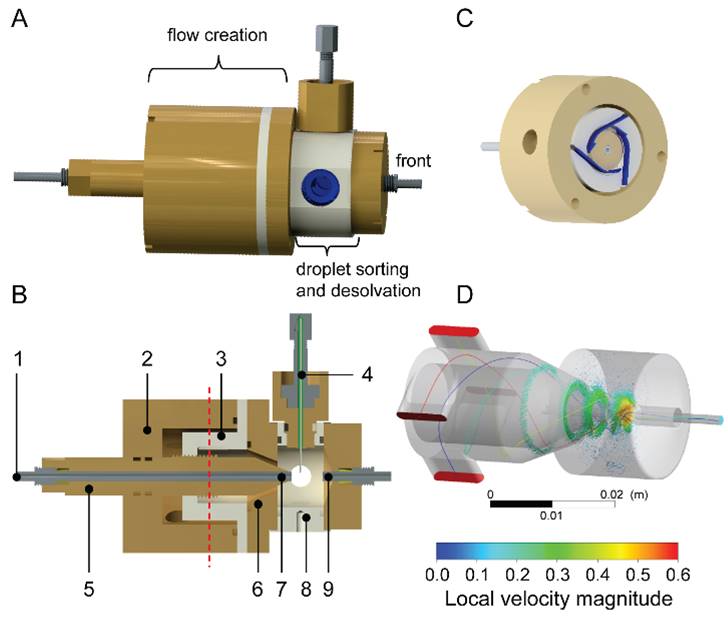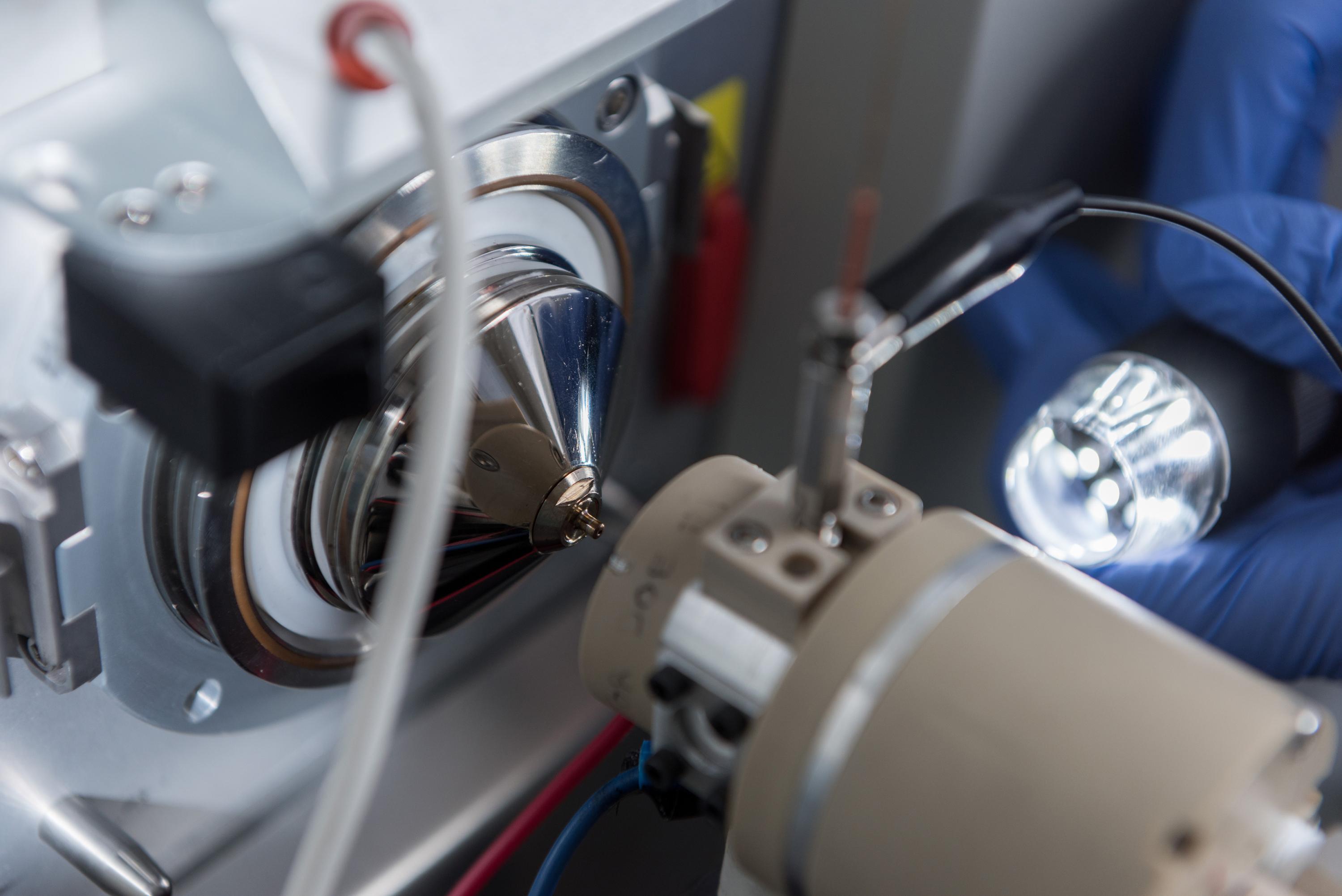Georgia Tech’s Dry Ion Localization and Locomotion (DRILL) device is designed to improve sensitivity and detection capability in mass spectrometry (MS) through the manipulation of electrosprayed droplet trajectories. DRILL uses inertial sorting via a swirling flow to prescribe different fates for electrosprayed droplets based on their size, allowing a greater degree of control than previously available. More specifically, DRILL is an improved interface between an electrospray ionization (ESI) source and MS inlet that significantly improves the signal-to-noise ratio, sensitivity, and limit of detection by reducing the amount of analyte ions lost due to incomplete desolvation.
The DRILL interface ensures that (1) a greater fraction of charged droplets produced by the ion source is transferred to completely desolvated ions, (2) most of charged analyte molecules enter the MS inlet, (3) sample dispersion is minimal, and (4) entry of neutral solvent molecules into the MS inlet is minimized. With these advancements, this novel Georgia Tech device enables a new level of optimization for all applications of mass spectrometry techniques.
- Flexible: Allows for integration with a range of operational modes and analytical workflows for different ESI-MS techniques
- High performance: Offers enhanced sensitivity and a significantly improved limit of detection
- Robust and effective: Minimizes charged ion loss and enables sampling of the most analytically “valuable” droplets
- Easy-to-use: Connects easily to any mass spectrometer without modifications needed
DRILL improves the sensitivity and dynamic range of mass spectrometry, which is key for advancements in health science fields. DRILL has specific applications in:
- Proteomics
- Metabolomics
- Biomarker discovery
- Drug development
Mass spectrometry plays a prominent role in biomedical research, with important uses in fundamental biochemical studies, basic cell biology research, and applied fields. Enabling the efficient generation, collection, and transmission of ions by minimizing the loss of droplets upon ejection from the ion source is paramount for stable MS analysis. While several new methods have attempted to improve sensitivity in ESI sources, this Georgia Tech device seeks to truly optimize MS systems through a novel approach to charged droplet trajectory manipulation.

Diagram of the DRILL device and the results of flow simulations showing increasing velocity of the swirling flow.

The DRILL device connected to a mass spectrometer in the Georgia Tech lab
